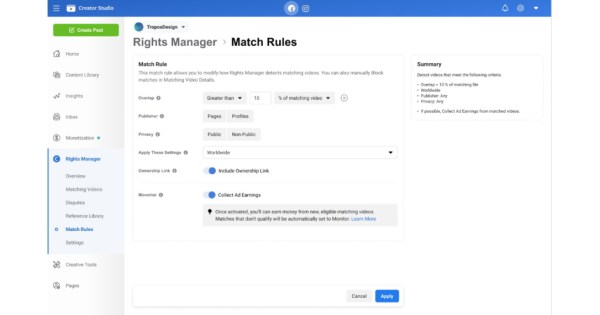Search engine optimization (SEO) has come a long way since the days of keyword stuffing and clickbait copy.
To rank highly in search results on Google and other major search engines, your website’s content needs to match a potential visitor’s intent. Optimizing your site for SEO is all about understanding how search engines work and how people use them.
Here, learn about the different types of SEO marketing and how to improve organic search results for your online store or website.
What is SEO marketing?
Search engine optimization (SEO) is a marketing strategy aimed at improving a website’s visibility on search engine results pages (SERP). Techniques include keyword optimization, quality content creation, link building, improving site speed, and mobile-friendliness.
Why is SEO marketing important?
Search engines are the primary way in which users discover websites. So, whether you produce informational content or commercial products, being seen in search by users is a large part of running a successful website.
In commerce, 59% of shoppers use Google Search to research a purchase they plan to make in-store or online, while around half of consumers use Google to discover new products.
With that in mind, ecommerce SEO is a crucial part of ensuring your site appears early and often in search engine results for terms related to your offering. No matter how great your website might be, the simple truth is that visitors are unlikely to find you if your search rankings are low.
Types of SEO marketing
SEO activities fall into three general categories. Let’s take a look at them:
On-page SEO
Off-page SEO
Technical SEO
1. On-page SEO
The largest bucket of SEO marketing activities, on-page SEO involves optimizing the content of your website (including text, images, and videos) to ensure visitors and search engines can understand and navigate the information you publish.
Search engines look for on-page factors that help determine the quality of your content and, in turn, where to rank your site in results pages. Examples of on-page SEO factors include topic relevance, metadata, and the slug in your page URL.
Topic relevance
Web pages that rank highly in search engines contain content that closely matches the search intent of users. That means you need to think about what searchers are looking for when they enter queries, and provide the information or services they’re seeking.
Best practices for producing SEO content include offering original information, updating facts regularly, and sticking to topics within your website’s area of expertise.
Metadata
Metadata doesn’t appear on your web pages, so it’s not visible to regular website visitors. Instead, meta information is contained within your pages’ HTML code, tagging and labeling content in a way that’s easily digestible for the search engine bots that crawl your site.
Keeping meta information comprehensive and updated will give your content the best chance of ranking. Metadata includes details such as:
Title tags, which name a web page
Meta descriptions, which sum up the contents of a web page
Heading and subheading tags, which structure content and signal topic depth
Robot tags, which tell search engines whether to index pages and follow links
URL slug
A webpage’s slug identifies it within your website directory. The slug appears after the backslash (“/”) in your website’s URL. For example, the slug of this page is “seo-marketing.”
Search engines and visitors read slugs when trying to understand what content a page contains. So, choose a slug that closely matches the content and keywords associated with the web page.
2. Off-page SEO
Your website isn’t the only place for SEO marketing—you can take steps on other websites to boost your rankings on search engines as well.
Off-page SEO is primarily about building backlinks that increase your domain authority. That is, links on other websites that point to your site.
Backlinks
Surveying the links between websites is a part of Google’s algorithm known as PageRank. This ranking system was one of the original ways Google determined its search engine results, and remains an important part of SEO marketing strategy.
By earning links from respected websites, you’ll increase your topic authority and ranking ability. Essentially, the more quality backlinks you have, the more reputable search engines will interpret your site to be.
This is based on an assumption that content from high-quality websites will naturally be linked and shared.
Domain authority
As you create content, build links, and grow your organic search traffic, your website will increase its domain authority.
Domain authority is a measure of a site’s trustworthiness in the eyes of search engines. Older websites with high domain authority are more likely to rank in search engine results pages for keywords related to their area of expertise.
3. Technical SEO
Technical SEO involves making changes under the hood of your website in order to improve search performance. Technical SEO ensures your site speed is fast, optimized for search engine crawlers, and mobile-device friendly.
Follow these 4 SEO marketing tactics
Whether you’re planning SEO for a Shopify store or another website, here are some core SEO marketing tactics to help you climb those search results.
Keyword research
Competitive analysis
Active link building
Image optimization
1. Keyword research
Every page of your website that appears in search engine rankings is associated with one or more keywords (also known as search queries). The first step in any SEO project is to find out which keywords your visitors are using to discover your site.
If you’re a seller, your products may be revolutionary, but if you’re not targeting the right search keywords, customers may not see them online.
To conduct keyword research, use an SEO tool like Google Keyword Planner, Ahrefs, or Moz. These tools will reveal the keywords that generate your site traffic. Leverage this data to decide which existing keywords are most important to your website, and which new keywords you should pursue.
Ideally, keywords should be popular enough to generate significant traffic, but not so popular that you’re competing with websites and companies that have marketing budgets beyond your scope.
Use the tools above to narrow down your list of winnable and relevant keywords that are specific to your site.
💡 Read More: Keyword Research for Ecommerce: A Beginner’s Guide
2. Competitive analysis
Once you know which keywords to target, your next step is checking out SEO competitors who are already ranking highly in search engines for those terms.
By getting to know your competitors’ SEO strategy, you can formulate tactics that will help you climb the search rankings and overtake them. With high-quality, relevant, and comprehensive content, even small businesses can leverage SEO to outrank larger competitors and reach customers first.
A good starting point for competitive analysis is to find your competitors’ best-performing pages and figure out where their organic traffic is coming from. For instance, if a competitor is driving significant traffic through an informative blog post, use that post for inspiration when developing your own content. To do this kind of analysis, you can use many of the same keyword research tools above.
💡 Read More: What Is a Competitive Analysis? (How-To Guide)
3. Active link building
Though it can be time-consuming, link building is a well-acknowledged way to enhance your search engine rankings. Attracting links to your website from more authoritative sites signals to search engines that your content is worth visitors’ time.
To begin executing a linking strategy, make sure you’ve established a presence on social media platforms and local business directories. The foundational links you generate from these influential sites can give you a lift in search engine results.
Next, pitch your business or products to relevant websites or news outlets used by your audience. If you have subject-matter expertise, consider pitching a blog post that points back to your website. If all else fails, you can also pay to play by launching a PR campaign.
💡 Read More: How To Get Backlinks: 15 Proven Strategies
4. Image optimization
While Google and other search engines are primarily concerned with the written content of your website, they also crawl your images and media. By optimizing the images on your website, you can enhance your on-page SEO while adding accessibility benefits for visitors to your webpages.
Start by incorporating descriptive keywords into image file names and writing helpful alt text for all the images on your site. This will give search engines another tool for determining whether your content is relevant and valuable.
Next, make sure your images are the optimum size and file format. Images that are too large will have longer load times, which affects the experience of visitors to your site. Large images can cause Google and other search engines to penalize your search rankings.
💡 Read More: What Is Image Optimization? 8 Tips For Your Website (2024)
Ready to learn more about SEO marketing for your ecommerce business? Consult the Shopify guide: The Complete SEO Checklist: 38 Tips for 2024
Illustration by Rose Wong
SEO marketing FAQ
What does SEO stand for in marketing?
SEO stands for search engine optimization. It is a measurable, repeatable process used to send signals to search engines that your pages are worth ranking in Google’s search results.
What is SEM?
Search engine marketing, sometimes called SEM, is the creation of relevant content on a website to attract ideal customers through organic search results and persuasive paid search engine advertising to drive traffic. You can increase traffic by creating new web pages or optimizing existing ones.
What is SEO in digital marketing?
SEO in digital marketing is the practice of increasing organic traffic to your website through tweaking pages to improve search engine rankings, creating new content to target keywords, and improving your site to be better understood by search engine crawlers.
Is SEO a marketing skill?
Yes, SEO is a marketing skill because it involves optimizing a website’s content and increasing traffic through strategic actions. Mastering SEO requires understanding keyword research, optimization, and technical aspects to align websites with search engine algorithms.
What is an example of SEO marketing?
An example of SEO marketing is writing blog posts that target specific keywords relevant to the audience. This increases the chances of ranking higher on search engine results pages. It also boosts conversions by attracting customers looking for information or solutions.
How do I start SEO marketing?
Find a keyword that has good search volume.
Understand the search intent of your keyword.
Write your page using your keyword research data.
Optimize your page meta title and description.
Publish your page.
Build links to your page or website.
Is SEO marketing paid?
No, SEO marketing is not paid because it focuses on improving organic search rankings.
What is the difference between SEO and SEM?
The difference between search engine optimization (SEO) and search engine marketing (SEM) is SEO focuses on increasing organic traffic, while SEM includes both increasing organic traffic and running paid ads to increase traffic.









